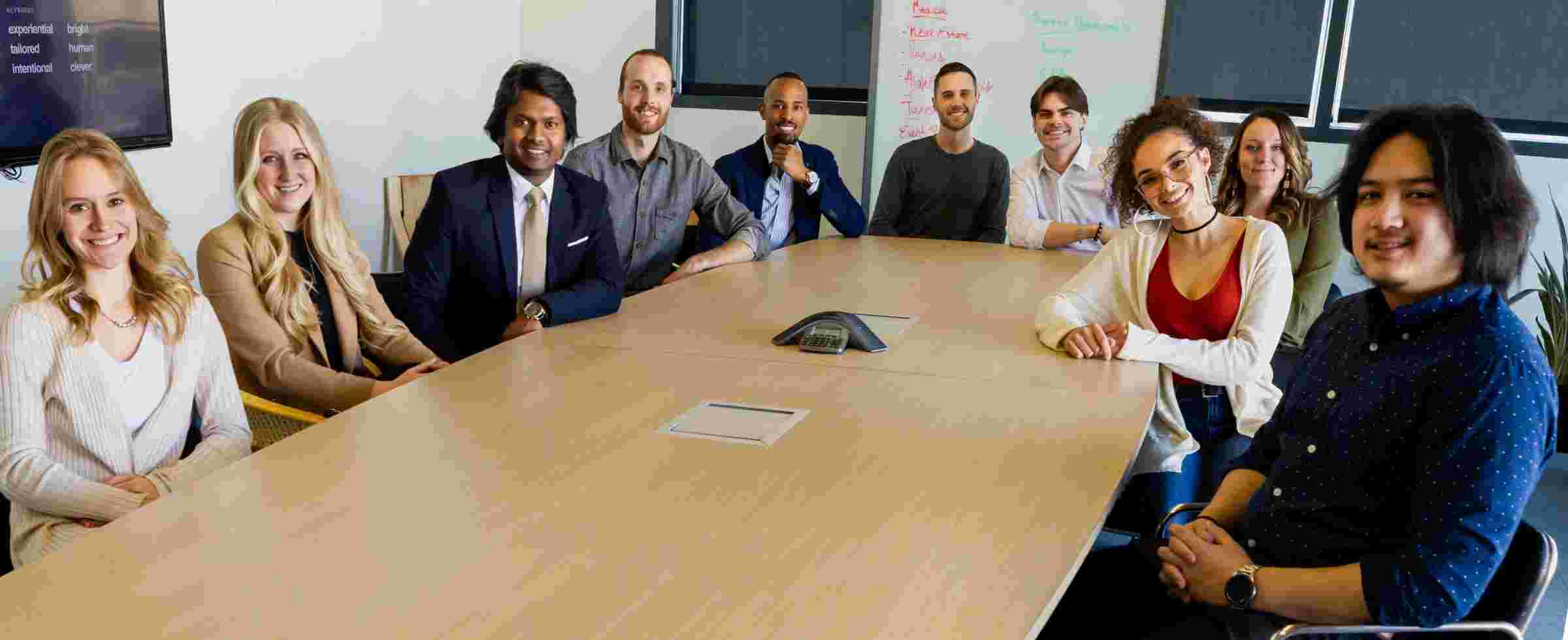Recognition at Work: the Impact of Giving Generously

Recognition at Work: the Impact of Giving Generously
30th May 2023 By Adosphere
To keep your employees happy and motivated, workplaces and management need to appreciate employees, consistently. Digital platforms work as a wonderful place to enhance communication and award employees with their due credit. One of the most efficient digital platforms is Workplace by Meta. With its incredible features, the platform offers a wonderful space to give more recognition to employees. Another useful platform is Adosphere. It offers wonderful tools and features to enhance communication at workplace and also facilitate better recognition. With the partnership between Adosphere and Workplace, the world of business has gained a new and big platform to amplify recognition at workplace. When high employee turnover is causing organisations enormous headaches, recognition remains vital when retaining and inspiring staff. So how can you get it right?According to employees from across the globe, recognition is the #1 thing a company can do to inspire great work. When OC Tanner talked to workers in countries including India, China, Mexico and the US, appreciation for their work was top of their wishlists.This cross-cultural consensus shows just how powerful appreciation for effort can be. But although companies are aware of the importance of recognition, it hasn't always been a priority for them - the same survey found that only 61% of employees felt appreciated in the workplace. However, this may be changing in the wake of the Great Resignation and with a deeper focus on employee engagement."I think organisations are more focused on the importance of employee reward, however that is defined, and employee recognition," says Charles Cotton, senior advisor for Reward and Performance at the UK’s CIPD."With recruitment and retention issues as external drivers there is focus on how people are being treated at work and organisations are looking at rewarding and recognising employee contribution in a fair way. They’re also looking at how they are demonstrating it to employees and externally to customers, investors and other stakeholders."
What does recognition in the workplace mean?
Workplace recognition is about acknowledging and praising employees for their contributions. It can take many forms. From a simple, in-person 'thank you' or shout-out on the company's social media platform to workplace benefits or paid time off. But although recognition can be monetary, it's often more a matter of giving positive, public feedback."Reward and recognition are bandied around as being synonymous, but there is a distinction between the two terms," Charles explains. "Rewards are often things that are tangible, transactional, conditional and expected. While recognition is often seen as the opposite – intangible, relational and unexpected."Organisations have many opportunities to recognise employees for effort as well as achievement. You can use recognition to:Standards of work
Public recognition can help set a benchmark for what managers want their teams to achieve.Reaching a milestone
It's not just promotions that should be announced and celebrated. Marking work anniversaries helps nurture a sense of belonging. And staff appreciate wider recognition too and perceive organisations that celebrate employee life events like getting married or having a child as better places to work.1Acknowledging new starters within their first month
With turnover high within the first six months of starting a job, positive feedback in the early days is vital. Unlike reward incentives like bonuses, the beauty of recognition is you don't have to defer it until someone achieves a goal. Recognising people in the moment can also be particularly effective with younger workers who are used to getting real-time feedback.Initiative and innovation
Recognition can encourage innovation, independent working and problem-solving. It can also help people develop new ideas for products, services and ways of working.Adaptability
Change is challenging for organisations and employees alike. Praising workers for being adaptable is a way of showing how you would like people to navigate change.Reflecting company values
Recognition - and how you give it - can be a vehicle for demonstrating company values and modelling the behaviours you want to see. When managers show appreciation and gratitude for staff effort, particularly around behaviours that align with organisational values, it encourages employees to do the same, creating a virtuous circle. The value of recognition for employee engagement
Psychologists talk about how praise causes the brain to produce the feel-good chemical dopamine, and it's certainly true that we all like to feel appreciated. But from an organisation's point of view, employee recognition also brings enormous and concrete benefits.Increasing employee engagement Recognition is a critical element of employee engagement. It's particularly pertinent in the context of organisations moving increasingly to a hybrid work model, where some employees work remotely most or all of the time. Recognition can help engage these remote workers, bringing them into a positive feedback loop, connecting them with company culture and ensuring they don't feel forgotten.Improving employee retention
Gallup estimates that replacing a staff member costs between half to twice an employee's salary.2 And that's just the monetary cost, without the implications of knowledge lost and the toll high staff turnover takes on morale. But people who feel valued are much more likely to stay with a company. According to one study, 63% of people who receive recognition at work consider themselves very unlikely to look for a new job. That's compared to 11% of those who are never or rarely recognised at work.Reinforcing company culture
Linking recognition to behaviours like teamwork, collaboration and innovative thinking can help organisations double down on their culture."When organisations have recognition schemes, they often link it to the behaviours they'd like to see exhibited within the organisation," says Charles. "Even when it comes to things like financial rewards, like bonuses or incentives, part of it will be linked to what you've achieved, but also how you've achieved it."Promoting high performance
It’s well known that engaged employees are more likely to put in the discretionary effort that helps boost productivity. And this shows in the bottom line. According to one study, happiness at work raises productivity by 31% and sales by 37%. It also influences the way people do their job, increasing accuracy on tasks by 19%.3How do you give recognition at work?
A one-size-fits-all approach isn't the way to go with recognition. People are motivated differently, and some will find smaller gestures as influential as significant rewards. Sources of appreciation are also important. While people often correlate recognition as coming from line managers and leaders, recognition from peers (AKA social recognition) can also be particularly powerful."In the past, recognition was more of a top-down approach," Charles observes. "What we're seeing now is recognition from colleagues, not only in your team, but outside your team, and that's being fuelled by advances in technology. It's easier for people to recognise colleagues via an online platform. And some organisations have rolled it out to people outside the organisation. Customers and clients are being encouraged to recognise contribution as well."The nature of any rewards that come with recognition can also be a lot more flexible. Gone are the days of the line manager deciding on a gift. Employees can now choose from benefits and rewards that mean something to them, from shared experiences that celebrate achievements, vouchers or time-based rewards like finishing early and duvet days. What are some examples of recognition in the workplace?
- Some high-profile and successful employee recognition schemes show how it can be done. Cisco. A winner of numerous employee experience awards, Cisco has a connected recognition scheme where any employee can nominate a colleague for a monetary prize. Plus, employees get to pick their own rewards for their first and fifth Cisco anniversaries.
- McDonalds. The restaurant chain rewards employees with gift vouchers for length of service. They also get discounts at retailers and learning and development opportunities.
- General Motors (GM). The company’s recognition scheme is active in 26 countries. Employees can send and receive points-based recognition, which they can redeem for rewards of their choice.
How to create a programme for employee recognition
- There are considerable advantages to having a formal programme for recognition. It can define what people will be recognised for, align recognition with values and provide consistency. It also goes some way to ensuring transparency and a perception of fairness. People know how managers will recognise them and how they'll reward them.Essential steps in setting up an employee recognition programme include:Design with a focus on objectives and targets - set out what you want to achieve and when, and how you will measure progress
- Align with company culture - what are the behaviours you want to reward? How do they relate to the company values?
- Decide on the recognition platform you're going to use - make sure that it's mobile so that deskless and frontline workers are included in the recognition loop
- Make sure you have leadership and management buy-in - "If line managers are going to be recognising people for their contribution, then they need support and help in how they do that," says Charles
- Communicate the scheme to the workforce - position your programme as a campaign and make sure everyone knows about it
- Recognise frequently and regularly - overdoing recognition will reduce its power, but showing appreciation at least every few months is important. And if someone does a particularly good job, recognise their contribution straight away
- Personalise rewards - give employees a choice if possible, for example, vouchers for a range of retailers
- Get feedback to measure effectiveness - whereas the effectiveness of pure reward programmes are relatively easy to measure - you can see if the gender pay gap in your organisation is narrowing, for example - recognition is more subjective. Use surveys to find out if employees feel you recognise them and why. "You can look at metrics to see who's being recognised by whom, and when and why," says Charles
It won’t happen overnight, but over time you should see the power of your programme to positively influence employee turnover, employee absenteeism, sales and revenues, as well as making your organisation a more connected, happier place to work. Adosphere with its innovative features offers a wonderful set of advantages and space to enhance recognition at workplace.




